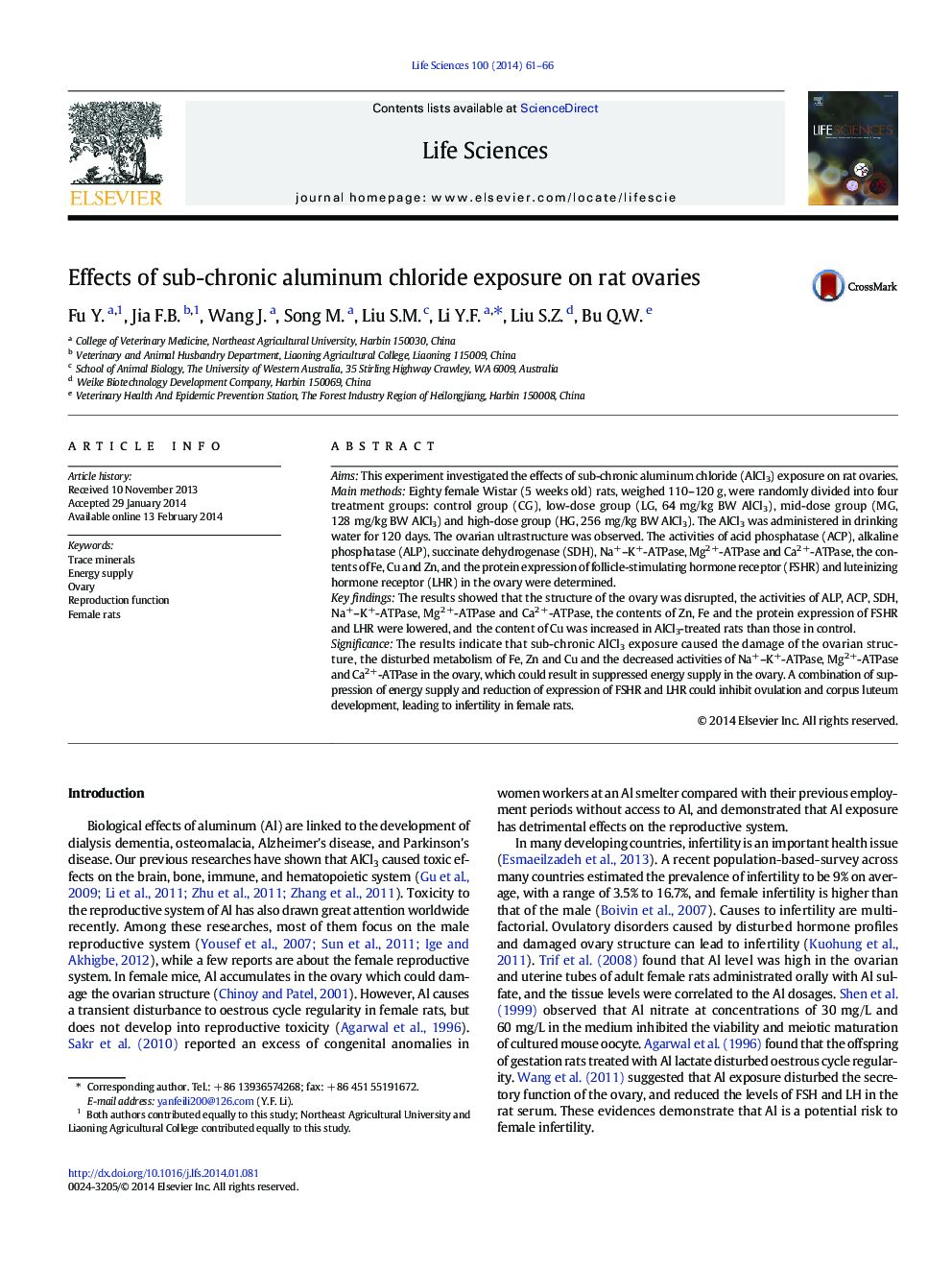| Article ID | Journal | Published Year | Pages | File Type |
|---|---|---|---|---|
| 2551336 | Life Sciences | 2014 | 6 Pages |
AimsThis experiment investigated the effects of sub-chronic aluminum chloride (AlCl3) exposure on rat ovaries.Main methodsEighty female Wistar (5 weeks old) rats, weighed 110–120 g, were randomly divided into four treatment groups: control group (CG), low-dose group (LG, 64 mg/kg BW AlCl3), mid-dose group (MG, 128 mg/kg BW AlCl3) and high-dose group (HG, 256 mg/kg BW AlCl3). The AlCl3 was administered in drinking water for 120 days. The ovarian ultrastructure was observed. The activities of acid phosphatase (ACP), alkaline phosphatase (ALP), succinate dehydrogenase (SDH), Na+–K+-ATPase, Mg2 +-ATPase and Ca2 +-ATPase, the contents of Fe, Cu and Zn, and the protein expression of follicle-stimulating hormone receptor (FSHR) and luteinizing hormone receptor (LHR) in the ovary were determined.Key findingsThe results showed that the structure of the ovary was disrupted, the activities of ALP, ACP, SDH, Na+–K+-ATPase, Mg2 +-ATPase and Ca2 +-ATPase, the contents of Zn, Fe and the protein expression of FSHR and LHR were lowered, and the content of Cu was increased in AlCl3-treated rats than those in control.SignificanceThe results indicate that sub-chronic AlCl3 exposure caused the damage of the ovarian structure, the disturbed metabolism of Fe, Zn and Cu and the decreased activities of Na+–K+-ATPase, Mg2 +-ATPase and Ca2 +-ATPase in the ovary, which could result in suppressed energy supply in the ovary. A combination of suppression of energy supply and reduction of expression of FSHR and LHR could inhibit ovulation and corpus luteum development, leading to infertility in female rats.
